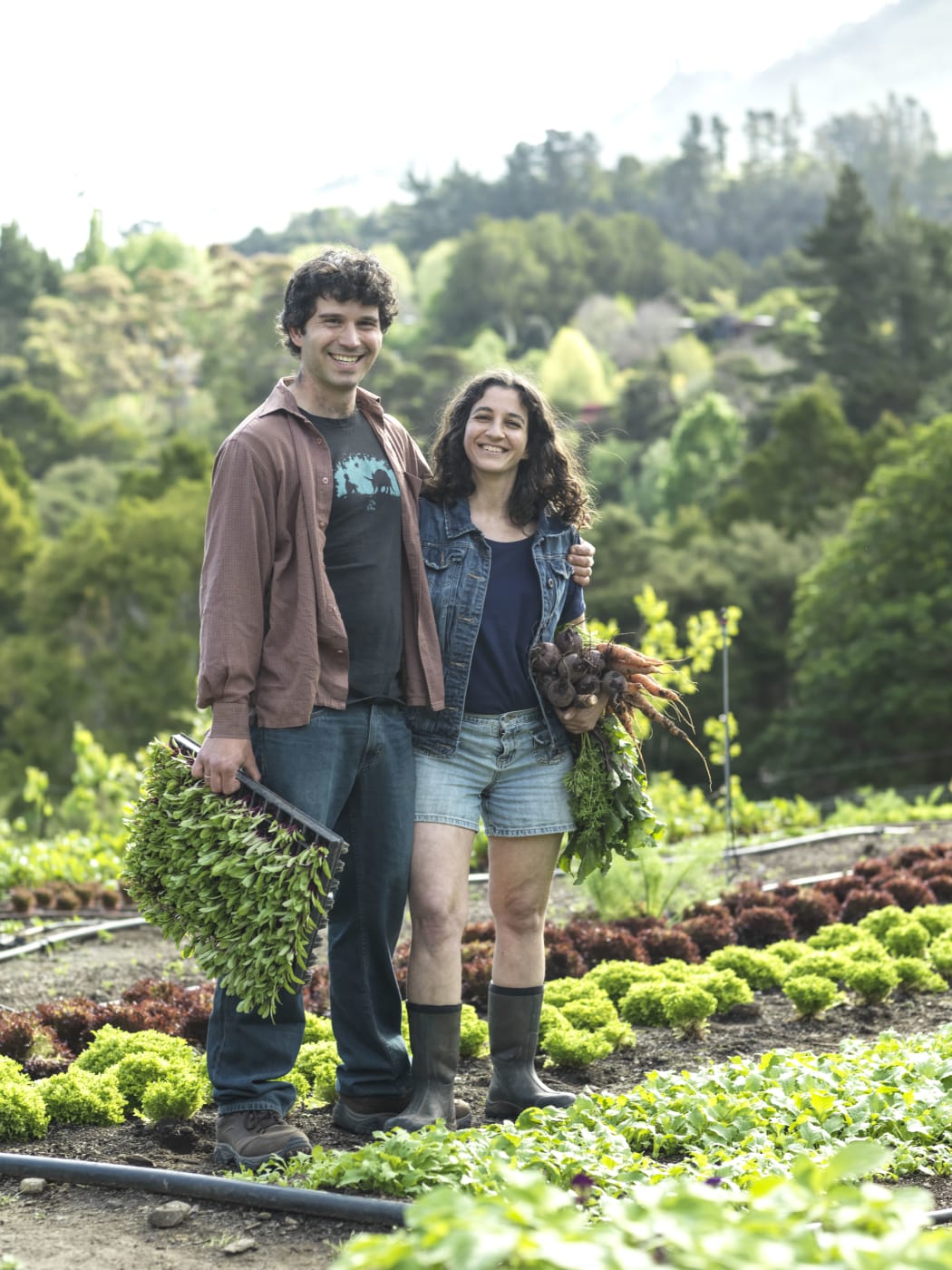Pickling, preserving and fermenting are thrifty ways to make the most of fruit and veggies when they are plentiful, say gardening gurus Niva and Yotam Kay.
The couple, who run Pākaraka Farm on the Coromandel Peninsula near Thames, also hold workshops, online courses and sell their produce.

Yotam and Niva Kay Photo: Jane Ussher
Their new book The Abundant Kitchen, a follow-up to The Abundant Garden, has tips and recipes for making those summer gluts last through winter.
The book covers 11 different preserving methods, Niva told Nine to Noon.
“Pickling generally refers to using vinegar. Vinegar reduces the pH and that makes the food safe to keep and preserves it.
“When we say fermenting, we usually mean when we're using microorganisms to interact with the food and transform it.”
This could be by creating the right conditions for microorganisms to come and ferment or by introducing a live culture, she says.
“When we talk about preserves in our book, we mainly mean when you make something using heat, so you're sanitising your equipment, you're sanitising the food and reducing any harmful microorganisms that could lead to spoilage.”
Root vegetables lend themselves to fermenting, Niva says, but cabbage makes the classic fermented food.
“Sauerkraut is so easy to make. If you have a medium cabbage and a tablespoon of salt you can make roughly a litre of sauerkraut ready to eat in a couple of weeks. Flavour it however you like with herbs with spices, add other vegetables in it. So, it’s one of the easiest things.”
Simply get your cabbage, make sure it's clean, and chop it up, Niva says.
“And add a tablespoon of salt roughly per cabbage, you basically knead it together and as you do that, what happens is the salt and the movement help break apart the plant cells and draw the juices out of the cabbage. And that's actually how you make the brine, so the cabbage is actually fermented in the juices of the cabbage.
“Pack it into a jar, put that a clean lid on the top, weigh it down so everything stays under the brine, it’s really important with ferments with pickles to keep everything under the brine. Put a lid with an airlock, ideally, and wait a couple of weeks.”
Yotam loves to preserve summer fruits and vegetables.
“I'll usually make my preserves in the middle of the day, pretty much it's equivalent to a siesta in Spain, and then I will just make a pot or two at a time. And we make enough that would last us for the winter.”
His key tips for preserving?
“Only put in things that you would enjoy eating. We're not talking about an industrial factory here. So, if you see any spoiled parts, remove them.”
He goes easy on the sugar too.
“Food preserves, unlike jam, don't have to have a huge amount of sugar in them. So, we make most food preserves, water preserves, relatively not sweet, we just put something that's equivalent, say a teaspoon of honey per litre of preserve just to offset some of the sour flavours.”
Use good jars and good lids, he says, and allow enough headspace.
“A gap between the preserves and the lid something like two and a half to three centimetres. Because the food does expand as it's been canned.”
Preserves can last for several years, Niva says, but the quality deteriorates over time.
“We usually prefer to eat ours within the year assuming by the time we’ve finished eating them, we'll have a new crop of that vegetable and fruit that we can enjoy fresh and then preserve for the next year.”
Practically any veggie can be pickled, Niva says.
“We love pickling vegetables in mixes. So, like Middle Eastern-style pickle. We love using seasonal vegetables like cauliflower, broccoli, carrots, capsicums, tomato, beans - even courgettes.”

